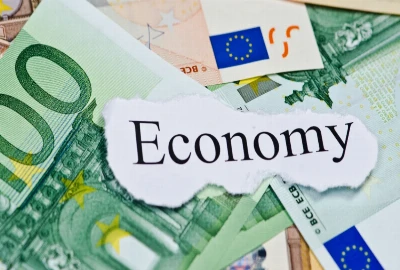Emotional Bandwidth: The Physics of Feeling in Digital Space

In a world where emotions are streamed, uploaded, and shared as effortlessly as files, understanding the limits of our emotional bandwidth has never been more crucial. The phrase “emotional bandwidth” captures an invisible physics — the push and pull of feelings transmitted through pixels, notifications, and curated screens. As much as we crave connection, the digital ecosystem often compresses complex emotions into bite-sized formats, forcing us to navigate empathy, exhaustion, and attention as if they were units of data.
This blog explores the physics of feeling in digital spaces — how we absorb, distribute, and sometimes deplete emotional energy online. From the silent weight of constant connectivity to the science of digital empathy, we’ll examine how emotional bandwidth defines our well-being, relationships, and even identity in the digital era.
The Physics of Feeling: What Emotional Bandwidth Really Means

Understanding Emotional Bandwidth
Just as the internet has a data bandwidth — the capacity to transmit information — we each have emotional bandwidth, the finite capacity to process, express, and absorb emotional input. Every message, image, or comment we encounter online takes up some of this space. Unlike physical energy, emotional bandwidth can’t be recharged with a simple rest; it demands emotional regulation, boundaries, and conscious disengagement.
The Science of Emotional Capacity
Psychologists describe emotional bandwidth as tied to cognitive load and stress regulation. In digital contexts, where we’re exposed to endless stimuli — outrage, joy, grief, and envy, all within seconds — our brains must constantly switch emotional modes. This rapid oscillation creates what researchers call “emotional fatigue,” where empathy becomes strained and reactions become performative rather than genuine.
When Digital Feeds Overload Emotional Systems
Social platforms are designed to optimize engagement, not empathy. Algorithms amplify emotional content that provokes strong reactions, which means we’re often consuming emotional extremes at a rate our nervous systems can’t sustain. The result is a modern paradox: we feel more connected yet more drained, more informed yet less emotionally available.
Emotional Compression: How Digital Platforms Flatten Human Feeling

The Aesthetic of Emotion Online
In digital spaces, feelings are filtered, captioned, and aestheticized. A breakup becomes a “soft launch,” grief becomes a carousel post, and activism turns into a shareable infographic. This aesthetic compression — the transformation of complex human experiences into digestible formats — diminishes the depth of our emotional exchanges.
The Rise of Performative Empathy
Social media encourages what scholars call “empathy signaling” — public expressions of concern that substitute for private emotional labor. Liking, sharing, or posting solidarity statements gives the illusion of connection, but these gestures often lack the sustained attention that real empathy requires. Emotional bandwidth becomes performative currency, traded for visibility rather than authenticity.
The Paradox of Digital Vulnerability
While oversharing may seem intimate, it can paradoxically lead to emotional distance. The act of curating one’s pain for public consumption changes its texture. Vulnerability becomes an algorithmic asset — something to be optimized for reach — and genuine emotional expression becomes yet another form of content production.
Empathy Lag: When Emotional Signals Lose Strength Online

The Delayed Transmission of Feeling
Just as in physics, where distance weakens signal strength, digital communication introduces what could be called “empathy lag.” Text lacks tone, emojis flatten nuance, and even video calls can’t fully replicate in-person empathy. Our emotional signals degrade as they travel through mediated channels, creating misunderstanding, misinterpretation, and emotional detachment.
Context Collapse and Emotional Misfire
Online spaces often blend multiple social contexts — work, family, friends, and strangers — into one continuous audience. This “context collapse” makes emotional expression riskier and more confusing. A sarcastic comment meant for friends can read as hostility to others; a sincere post may seem self-indulgent or tone-deaf. Emotional misfires are not signs of insensitivity but symptoms of a structurally flawed communication medium.
Digital Empathy and Its Discontents
Efforts to build empathy online — from reaction buttons to AI-driven mood tracking — often mistake visibility for understanding. True empathy requires slowness, attention, and silence — qualities that digital interfaces rarely allow. As a result, we experience simulated empathy: gestures of concern that mimic care without the depth of presence.
The Energy Economy: Emotional Labor in Online Spaces

Emotional Labor and Content Creation
Every post, story, or message requires emotional labor — the conscious modulation of feeling to maintain social harmony or digital identity. Influencers, activists, and everyday users alike perform emotional work to appear engaged, authentic, or resilient. This constant labor consumes emotional bandwidth, leaving little room for private restoration.
The Cost of Being “Always On”
In digital culture, attention is both currency and commodity. Being “always available” for friends, followers, or audiences creates what experts call “compassion fatigue.” Constant exposure to others’ emotional needs drains personal reserves, leading to burnout, detachment, and even anxiety around notifications.
The Myth of Infinite Empathy
The internet often promotes an unrealistic expectation of boundless compassion — to stay informed, responsive, and emotionally active across global crises. But just as no device can stream endlessly without overheating, no person can sustain infinite empathy without collapse. Recognizing emotional limits isn’t selfish; it’s a form of emotional sustainability.
Recalibrating Emotional Bandwidth: Practices for Digital Well-being

Setting Emotional Boundaries
One of the most effective ways to manage emotional bandwidth is through boundary-setting. This includes curating your digital feeds to minimize emotional clutter, scheduling offline time, and resisting the urge to respond immediately to every emotional prompt. Boundaries help preserve emotional clarity in the noise of constant connection.
Practicing Emotional Minimalism
Emotional minimalism is the art of intentional feeling — focusing your emotional energy where it matters most. It involves asking: Does this post, conversation, or platform deserve my emotional attention? By filtering emotional inputs, you create room for genuine connection instead of reactive engagement.
Restoring Emotional Equilibrium Offline
Offline activities — journaling, nature walks, in-person conversations — act as grounding circuits for emotional regulation. They reintroduce slowness and texture to feeling. Think of it as emotional “cool-down” time after digital overstimulation. These analog pauses aren’t escapes from digital life; they’re recalibrations that make sustainable connection possible.




